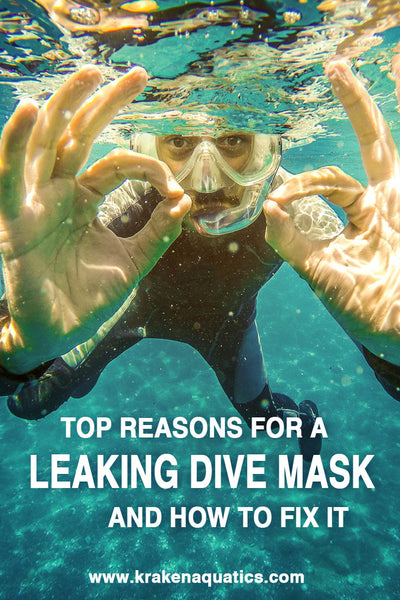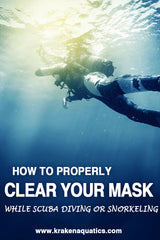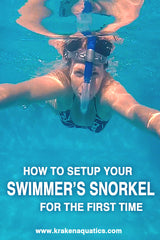
There's not much that is more annoying than a dive mask that keeps leaking while snorkeling or scuba diving. A leaking mask isn't dangerous by any means but constantly having to stop and clear out the water from the mask can be distracting and giving you less time to focus on what you are there to see. We highly recommend having a high quality mask that has a silicone skirt made from quality material. We typically steer away from the cheap masks that you'll find on the corner down on the beach. It's worth the extra money to get a good mask and snorkel.
The first thing most people think when their mask starts to leak is that there must be something wrong with the mask and immediately want to either throw it in the garbage or return it and exchange it for a new one. Before you do that, make sure that one of the following reasons that are easy to fix aren't causing your mask to leak.
There are typically a few reasons that masks will leak. Watch our video on Top Reasons For a Leaking Dive Mask and How To Fix It or continue reading below. Also, be sure to subscribe to our YouTube channel for more videos like this.
WATCH FOR OBSTRUCTIONS
Some sort of obstruction preventing the mask from sealing properly is one the most common reasons for a leak. This could be caused by hair (especially a mustache), the silicone skirt folding even a tiny bit around the edges or even over-tightening the straps. To get a good seal, there can't be anything between your skin and the silicone skirt of the mask. Even just a few strands of hair is enough.
An easy way to check if you are getting a good seal is to position the mask on your face with the straps just hanging and then inhale through your nose. If you can hear or feel any air coming into the mask, then you don't have a good seal. When you inhale, the mask should suction to your face and you should be able to let go of the mask and the mask should stay on your face as long as you are still inhaling through your nose. If you are finding that you can't get a seal, be sure to pull any hair off your face or forehead completely clear of the mask, put your mask on first and then pull the strap over your head. Run your fingers under the silicone skirt of the mask starting around in the area around your cheeks. Continue running your fingers up and around the mask and making sure that no areas of the skirt are folding and are laying flat against your skin. This might be something your partner or friend could do for you as they could probably better see if any of the skirt is folding under.
DON'T OVER-TIGHTEN THE STRAPS ON YOUR MASK
If there isn't any sort of interference, probably the next most common cause would be over-tightening the straps. Many people think that the tighter you tighten the mask, the better the seal you will get. This is actually incorrect and will actually cause the mask to not seal properly and therefore cause the mask to leak. What actually is holding the mask against your face and helping to create the seal is the water pressure.
Once you have your mask on and you are sure there are no obstructions, tighten your mask as you normally would. Then hold your mask with one hand and with your other hand, release the tension on one of the buckles. You're just trying to relieve any excess tension on the strap, not loosen it. This should help give your mask the proper tension and allow it seal better.
BREATHING OUT THROUGH YOUR NOSE
If there is no interference and your mask isn't over-tight, then water getting into the mask could be from exhaling through your nose. If you're using your mask and water keeps leaking, clear out the water and try pinching your nose and see if the leaking stops. If it does, then that is the problem. For some, it's natural to exhale through the nose a little instead of only through the snorkel or regulator. If that's the case, it will take a little practice to only exhale through the mouth.
DOES THE MASK FIT PROPERLY
If none of the above works, then most likely the issue is simply that the mask doesn't fit your face. Since mask skirts that are made from silicone are quite flexible, this is usually not the case but it certainly is possible depending on the size and shape of your face. If you purchase your mask from your local dive shop, you will want to make sure you test the mask for proper fitment before you purchase it.
Proper fitment is just one thing to look for when purchasing a new dive mask. Watch our video on What To Look For When Purchasing A Dive Mask for more tips. Also, be sure to subscribe to our YouTube channel for more videos like this.
Hopefully if you are having an issue with your mask leaking, one of the solutions we mentioned above will help fix it. Sometimes a mask will work perfect on one day and leak the next day. It just happens. Sometimes something as simple as putting your mask on with a dry face is enough to fix the problem.





